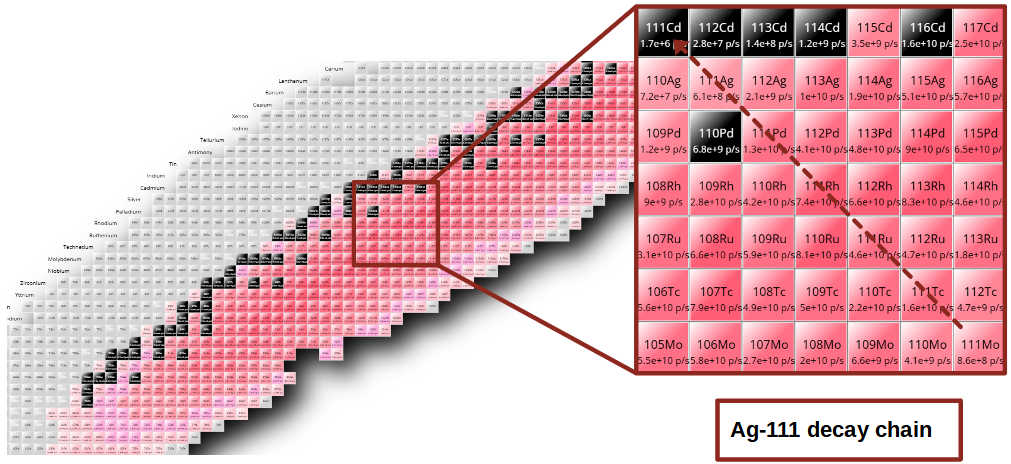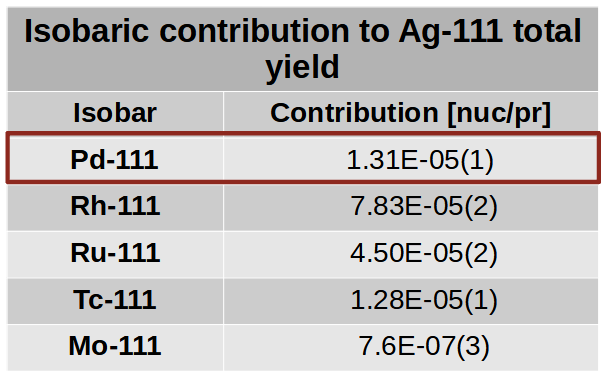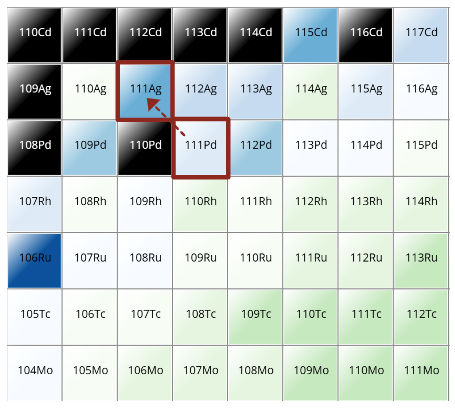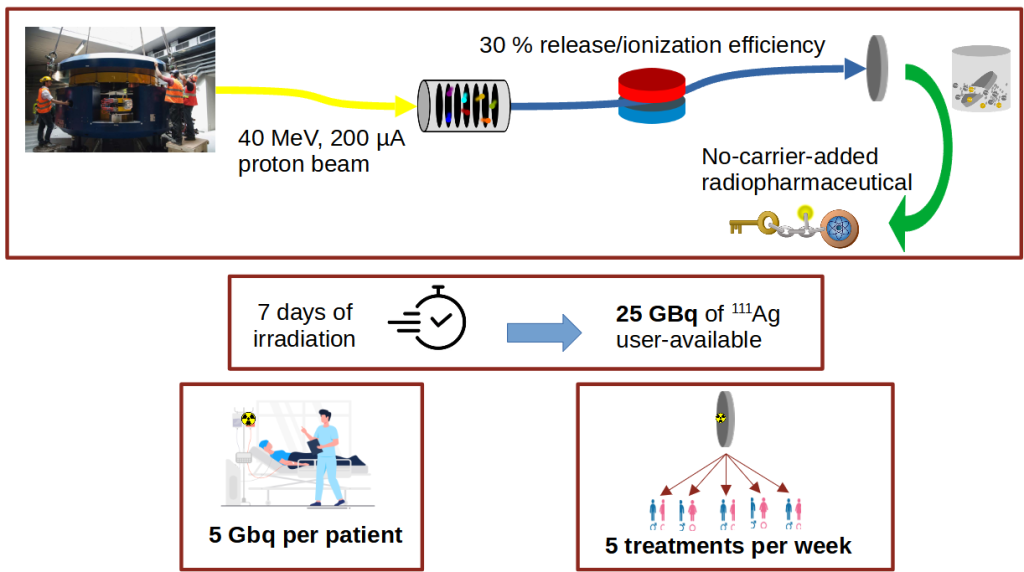
Calculations were performed to predict the available nuclide production rate with the ISOL technique at SPES. The results of these simulations were published in the following papers:
- Andrighetto, A., Tosato, M., Ballan, M. et al. The ISOLPHARM project: ISOL-based production of radionuclides for medical applications. J Radioanal Nucl Chem 322, 73–77 (2019). https://doi.org/10.1007/s10967-019-06698-0
- Ballan M. et al. Preliminary evaluation of the production of non-carrier added 111Ag as core of a therapeutic radiopharmaceutical in the framework of ISOLPHARM_Ag experiment. Applied Radiation and Isotopes, Volume 164, October 2020, 109258. https://doi.org/10.1016/j.apradiso.2020.109258
In September 2025, a new set of simulations confirmed the previous results. In the next sections, the Ag-111 case will be quantitatively described.
Simulation code comparison

- PHITS predicts a 3 times higher Ag-111 yield, consistent with its fission model favoring symmetric over asymmetric fission
- Before 2020, FLUKA showed a similar behavior until the fission model was tuned
(see L. Centofante et al., Rev. Sci. Instrum. 92, 053304 (2021), https://doi.org/10.1063/5.0045063) - FLUKA (2020 version) was chosen to simulate the nuclide chart according to the production rate at SPES
Isobars contributions


- The isobars that decay into Ag-111 contribute to its total yield
- Rh-111, Ru-111, Tc-111, Mo-111 have half-lives shorter than one minute
Expected activity

- About 5 GBq area needed for 1 dose in clinical practice
- 5 doses/week are expected

